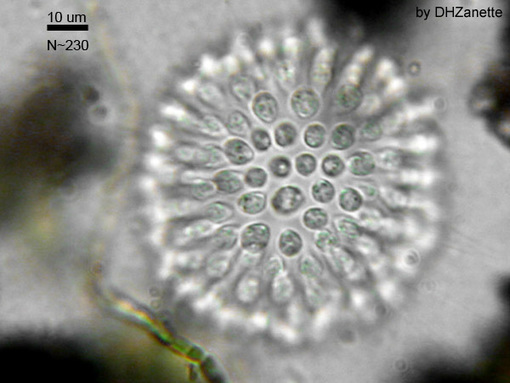A single, billion-year-old mutation helped multicellular animals to evolve
Peering into the deep, deep past, Joe Thornton, PhD, and colleagues use molecular time travel experiments to reveal a simple genetic basis for the evolution of a protein necessary for multicellularity, one billion years ago.
In the history of life on Earth, few events were as significant as the evolution of multicellular animals from single-celled ancestors. This was no simple feat. To successfully function as a unified organism, every cell must play a specialized role and be in constant communication with other cells. If there are failures in cooperation, outcomes include cancer, developmental abnormalities or death. The complex interactions necessary for multicellularity are accomplished through intricate and coordinated molecular signaling. But almost nothing is known about how these molecular functions first evolved. It turns out, for one specific function at least, it most likely came down to dumb luck.
Taking a deep look into the distant, distant past, Joe Thornton, PhD, professor of ecology and evolution, and his colleagues focused on one particular protein that plays a key role in the formation of organized tissues in animals. Through “molecular time travel” experiments, they not only deciphered the sequence of the ancestral gene for this protein, they resurrected it in the laboratory to study how it functioned roughly one billion years ago. They found a single chance mutation was enough to cause the ancestor of the protein to evolve an entirely new function–one that became essential for multicellular organization.
The study, published in the journal eLife on January 7, 2016, is the first to experimentally describe a molecular mechanism involved in the evolution of multicellularity, and establishes a paradigm for research in evolutionary cell biology and the origins of complex life.
“Our experiments show how biological complexity can evolve though simple, high-probability genetic paths,” said Thornton, who served as co-senior author. “Before the last common ancestor of all animals, when only single-celled organisms existed on Earth, just one tiny change in DNA sequence caused a protein to switch from its primordial role as an enzyme to a new function that became essential to organize multicellular structures.”
To form and maintain organized tissues, cells must orient the direction in which they divide relative to their neighbors. In the flat tissues that line organs, for example, cells divide within the plane of the tissue; otherwise, malformations and cancer can result. This is accomplished through a process known as mitotic spindle orientation, in which dividing cells align their mitotic spindles—a network of protein filaments that pulls freshly duplicated chromosomes to opposite ends of the cell before it splits into two.
In cells from a broad range of animal species, the spindle is rotated relative to surrounding cells by a protein scaffold known as the guanylate kinase protein interaction domain (GK-PID). It acts as a kind of molecular carabiner by binding to two different partner molecules: an “anchor” protein on the inside of the cell membrane that indicates the position of adjacent cells and a motor protein that pulls on mitotic spindle filaments. Once hooked together by GK-PID, the motors pull the chromosomes toward the anchors, orienting new daughter cells in line with neighboring cells.
To study how GK-PID evolved its function as a spindle-orienting carabiner, Thornton and his colleagues used ancestral protein reconstruction—a technique Thornton’s group pioneered—to experimentally retrace the evolution of genes and proteins by working backwards through the tree of life.
Graduate students Doug Anderson and Victor Hanson-Smith first used computational methods to reconstruct the evolutionary histories of GK-PID and a related enzyme known as guanylate kinase (gk). The two proteins share similarities in sequence and structure but have different functions and histories—GK-PID is found in only animals and their closest unicellular relatives, while gk plays a fundamental role in making the components of DNA and is universal to life.
Their analysis revealed that GK-PID evolved when the gene for the gk enzyme duplicated and then began to diverge. This event occurred before animals and their closest single-celled relatives–choanoflagellates and filastereans–split from other single-celled organisms, roughly a billion years ago. One copy retained its original function, but the other evolved the capacity to serve as a molecular carabiner in spindle orientation.
Sourced through Scoop.it from: sciencelife.uchospitals.edu
See on Scoop.it – Virology and Bioinformatics from Virology.ca
